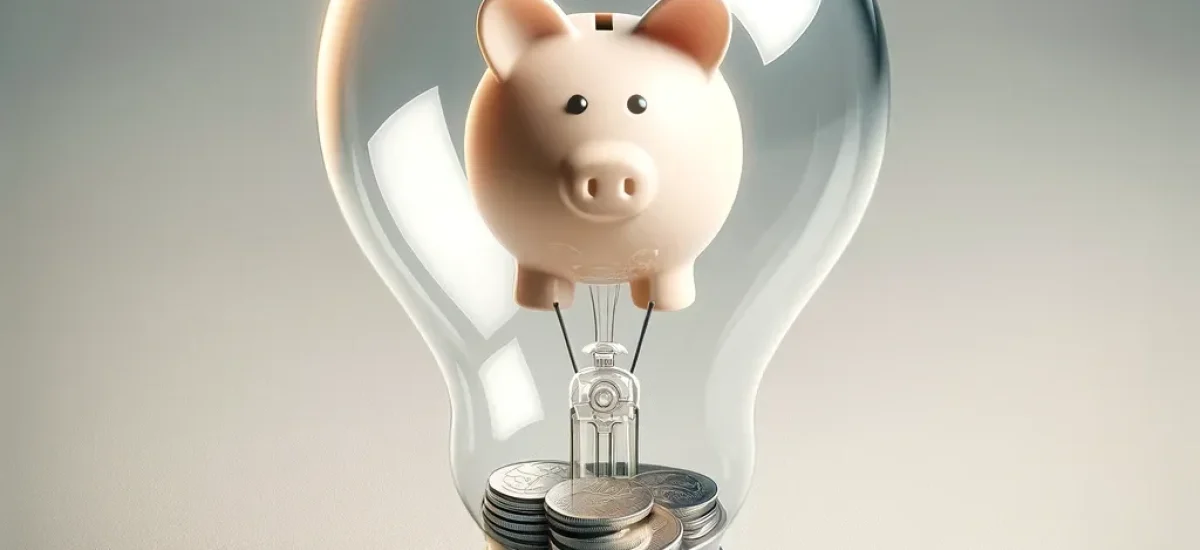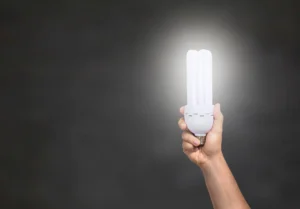
Hurricane season is a critical period for Puerto Rico, and being prepared can make the difference between safety and danger. In
Our time is strongly marked by almost unlimited access to information and communications, which is possible thanks to unstoppable technological progress. For our entertainment, for example, we have a huge number of screens, sound equipment, video game consoles, etc. However, one electronic device that deserves special mention is the television. Perhaps you have ever wondered "Does the TV use a lot of electricity?"
Here you will find out if it is a myth or if the television actually uses a lot of electricity. To find out, let's take a quick look at the fascinating history of the television as an entertainment appliance. We will explain to you why electronic devices use more or less electricity.
We will also see that the consumption of electricity lies in the type of technology of the television, so you will be able to know if the television really consumes a lot of electricity. Stay until the end to find out how you can save electricity with your TV.

You won't believe it but originally the tv was mechanical. It was invented by John Logie Baird in 1925. He used two Nipkow records. But it was not until 1931 that the television began to be electric (or electronic, to be more precise). Its inventor was the Russian Vladimir Zvorykin.
This first non-mechanical television worked thanks to an iconoscope, a kind of electronic tube consisting of a mosaic of photoelectric cells arranged in three layers.
In 1934 this technology evolved and was consolidated in the famous cathode ray tube television, which is even functional today. The change with respect to other types of technology was noticeable in terms of resolution and image quality and playback speed. This technology is known as CRT.
CRT technology was so efficient and successful that it held sway for several decades. Between the 60's and 70's, color televisions became popular, using the same tube system, but with three cannons. This technology could only be dethroned by flat screens that currently incorporate different types of technology.
Nowadays, many people wonder if the TV consumes a lot of electricity. You might think that CRT televisions, whose technology is now practically obsolete, would use more electricity than a plasma or LCD television, but you would be mistaken.. The truth is that televisions have evolved to improve their image quality, but not their energy efficiency.
This is a concept that has become popular over the years. The energy efficiency make reference to the virtue of a device to perform a specific activity completely and satisfactorily with the least amount of energy invested in it.
In the matter that concerns us right now, we will say that a television is energy efficient when it is capable of projecting an image of satisfactory quality using the minimum of energy resources.
As we said, CRT technology televisions were capable of offering an image of average quality, compromising relatively low consumption. This is because its brightness was not particularly high. On the contrary, current televisions project an impeccable image, with a very high resolution, with a very high brightness, which compromises a higher consumption.
It is said that a plasma television, for example, consume three times more electricity than a CRT. So it may be true that the TV consumes a lot of electricity. But, before affirming it as a certain truth, let's see the types of televisions that there are and the level of energy consumption that they have.
Televisions are categorized depending on the type of technology that they use to project an image. Besides of type of technology, you should know that The size of the TV has a lot to do with it. in the consumption that finally registers.
Televisions are a particular type of household appliance. With few exceptions, its use is not constant; that is, they remain on for just a few hours, and therein, as we will see, lies one of the tricks to enjoy them intelligently: according to a logic of energy efficiency.
Its consumption is measured in kWh/1000h. Normally, your electricity consumption is estimated by calculating Watts per hour for 1000 hours. Currently, the most popular types of televisions (and their respective consumption) are:
It could be said that their LCD flat screens charmed the world with their novelty. Also, compared to CRT TVs, they meant better picture quality (more colors, better sharpness, definition, resolution, and, of course, a larger size, not to mention more realistic sound). Their consumption is almost equal to that of those bulky televisions that were once so popular.
Speaking of your consumption, LCD TVs consume less electricity than CRT technology. You should also know that this type of television consumes less energy than Plasma technology.
Plasma televisions came stomping on the market. They were very popular at the time. This, because they presented enormous advantages, such as a brighter image, a greater angle of vision, and very attractive visually as devices.
However, their drawbacks soon became apparent, such as getting hot after a few hours of constant use, which, in turn, meant very high power consumption. It is one of the televisions that consume the most energy. It is said that a Plasma television spends between 20 and 40 % more than an LCD of the same size.
Generally speaking, a Plasma TV is the worst option if you want to save electricity. And if you want to put it in those terms, you can be sure that the television consumes a lot of electricity.
LED technology in televisions was a revolution in the field of entertainment. They are televisions that offer superior image quality in every way. For example, when they project the color black, the LEDs that make it up turn off completely instead of offering that typical dark gray color in televisions with other technology.
For reasons like this, and because LEDs don't require a lot of power to shine and compose a really sharp, wide image, LED TVs are a great alternative when it comes to energy consumption. They save around 25 and 40% compared to other technology TVs of the same size.
As you know, size does matter. A 75” television uses more energy than a 43” television, even though they use the same technology. Why? Because, the more inches, the more energy required to light them.
Speaking of figures, a 43” television could spend approximately between 65 and 88 kWh/1000h. A 55” would spend between 79 and 102kWh/1000h. And one of 75”, one of the largest that can be found on the market, would spend between 143 and 186kWh/1000h.
It is true that the TV consumes a lot of electricity. It is most likely one of the appliances that consumes the most energy in the home. However, as with almost all such appliances, electricity consumption can be reducedd that, finally, ends up worrying us.
How? It's very easy, really. It is about changing our habits regarding the way we entertain ourselves.
We can, for example, moderate our hours of television consumption. That is, to program ourselves on our favorite shows, to know what time they will be presented or repeated. Thus, instead of falling into the famous and uncomfortable zapping, passing channels or watching the first few minutes of a series to remove it at the end, we know what we are going to see.
Unplugging the television when we are not using it is a way of avoid the so-called “phantom consumption” In this way, we avoid keeping the TV connected by spending excessive electricity, not to mention that we extend its useful life.

Hurricane season is a critical period for Puerto Rico, and being prepared can make the difference between safety and danger. In

Understanding how a hurricane forms allows us to be one step ahead and prevent the devastating effects of these natural phenomena. Especially in areas

In a world where energy efficiency is increasingly a priority, learning to save energy has become a crucial need for both

In a world that doesn't stop, the need for a reliable and continuous power source is more crucial than ever. At JRH Power

Have you ever wondered how electricity becomes a constant in our lives, even in the most critical moments? At JRH Power

In our modern world, where electricity is vital, power outages are a frequent reality. Know how to connect a generator to the house